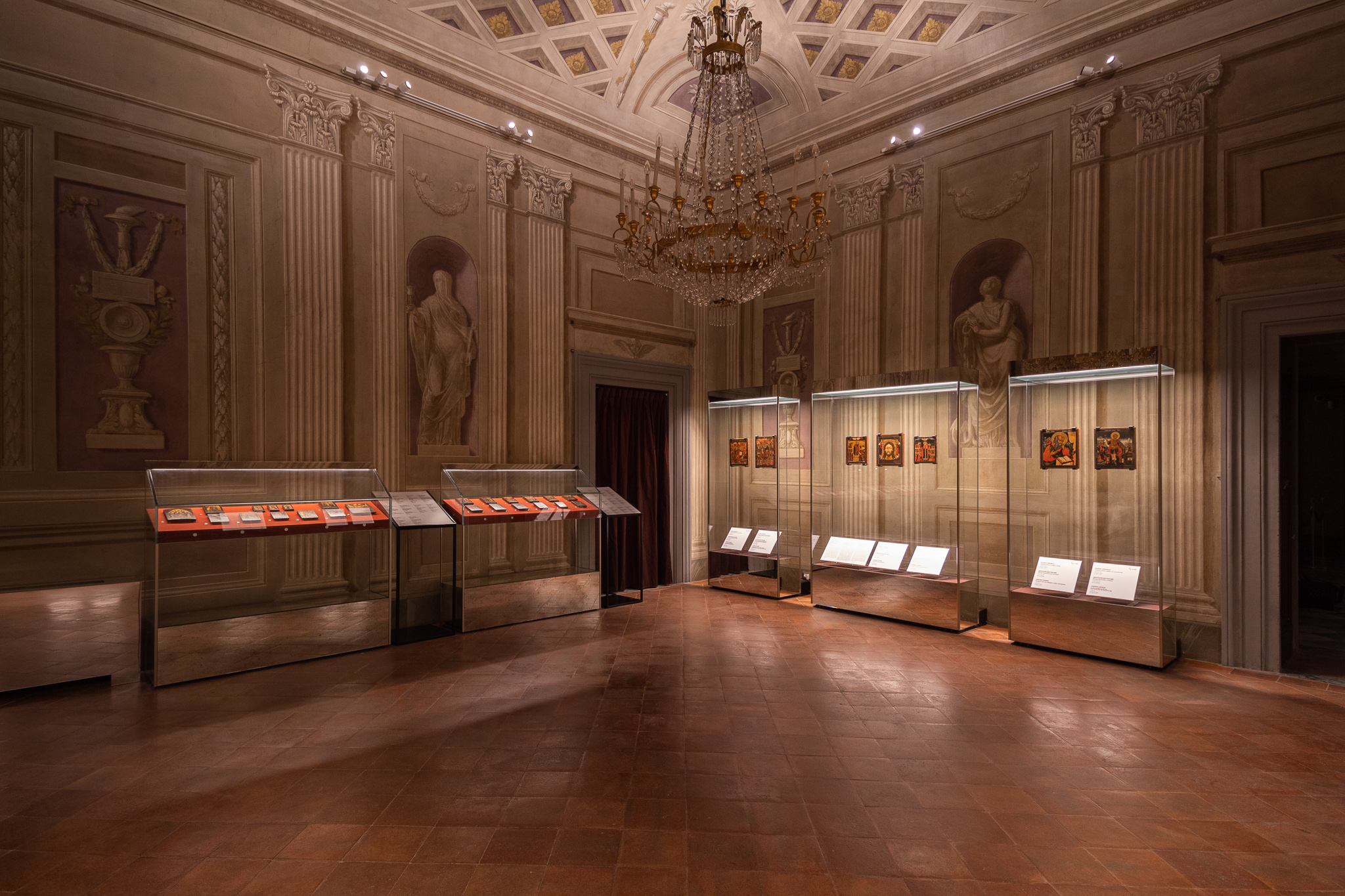
A prized collection of Russian paintings has a new home at Italy’s Uffizi Galleries, the palace where they once hung centuries ago.
In an effort to broaden its offerings, the Florence institution has opened the “Museum of Russian Icons,” a permanent exhibition of 78 religious paintings from the 16th to 18th centuries.
The show is on view now across four galleries at the Palazzo Pitti, an ornate palace from which the Medici family once ruled Tuscany. The display marks the first time that the rooms, lined with recently restored 17th-century frescos, have been open to the public.
The exhibition “responds to today’s need to expand the cultural offer for an increasingly heterogeneous audience eager to explore lesser-known contexts,” said Uffizi curator Daniela Parenti.
Installation view of “The Museum of Russian Icons” at the Uffizi Gallery in Florence, Italy. Courtesy of the Uffizi Gallery.
Thought to be the oldest collection of its kind outside of Russia, the group of paintings was assembled, initially, by the grand dukes of the Medici, appearing for the first time in an inventory of the family’s possessions in the early 1600s. The next time the collection appeared on record was in 1761, by which time the senior branch of the Medici family had died out and the House of Lorraine had assumed control of Tuscany, and the Palazzo Pitti.
It was during this later stage that the majority of the artworks entered the collection, largely thanks to Emperor Francis I. The paintings haven’t been on public display since the 18th century, kept, instead, in storage—largely due to the sheer size of the Uffizi’s collection.
Installation view of “The Museum of Russian Icons” at the Uffizi Gallery in Florence, Italy. Courtesy of the Uffizi Gallery.
Among the most notable inclusions in the collection is a two-paneled Menologio, a calendar of Orthodox religious holidays that depicts more than 100 scenes in miniature. There’s also a 1728 painting by Russian artist Vasily Gryaznov, the only example in the group with a known author.
A number of the icons were painted by unidentified artists associated with Russian Tsars of the day, and were sent directly from the Kremlin to Tuscany, according to the museum.
“The proximity of the Russian icons in the Palatine Chapel becomes a metaphor for a confessional bridge between Orthodox and Catholics that recalls the common spiritual roots and the frequent cultural exchanges between Italy and Russia that took place over the centuries and still persist,” added Uffizi director Eike Schmidt in a statement.